
Does Exercise Reduce Inflammation? How? And How Much?
Exercise both increases and reduces inflammation. The stress of exercise causes a surge in inflammation. This inflammation helps you recover and adapt. When that inflammation fades, it drops down to a lower baseline, reducing your overall levels of inflammation.
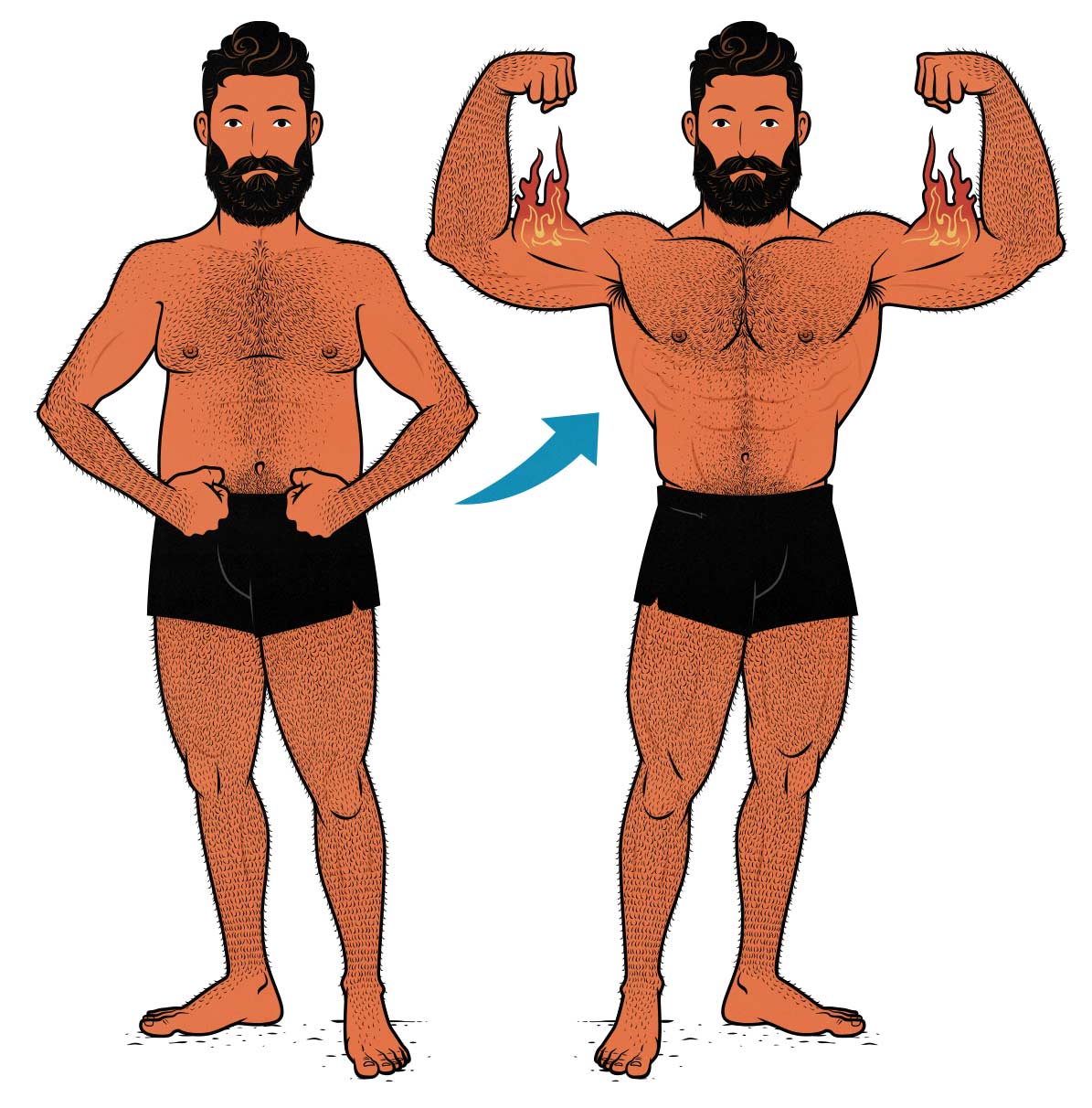
How Exercise Reduces Inflammation
A healthy lifestyle balances stress with recovery, giving you surges of inflammation in the areas you’re training with lower rates of inflammation overall (study).
I like how the Harvard exercise scientist Daniel Lieberman, PhD, explains it. He says that exercise is like spilling juice on a dirty floor. The mess forces you to get the mop out, and once you finish mopping, your floor is cleaner than it was before.
What happens inside your body is very similar. The exercise causes stress, shifting you into fight or flight mode (sympathetic). This spills the juice, so to speak. Afterwards, your body shifts to rest and digest mode (parasympathetic), producing all the hormones you need to recover and adapt. This is the mop. This ebb and flow of stress is what reduces chronic levels of inflammation.
Which Type of Exercise is Best for Reducing Inflammation?
A randomly controlled trial by Ho and colleagues found that 12 weeks of cardio reduced inflammation by 21%, 12 weeks of weight training reduced inflammation by 27%, and a combined program reduced inflammation by 33% (study). That’s great, but I think we can do slightly better.
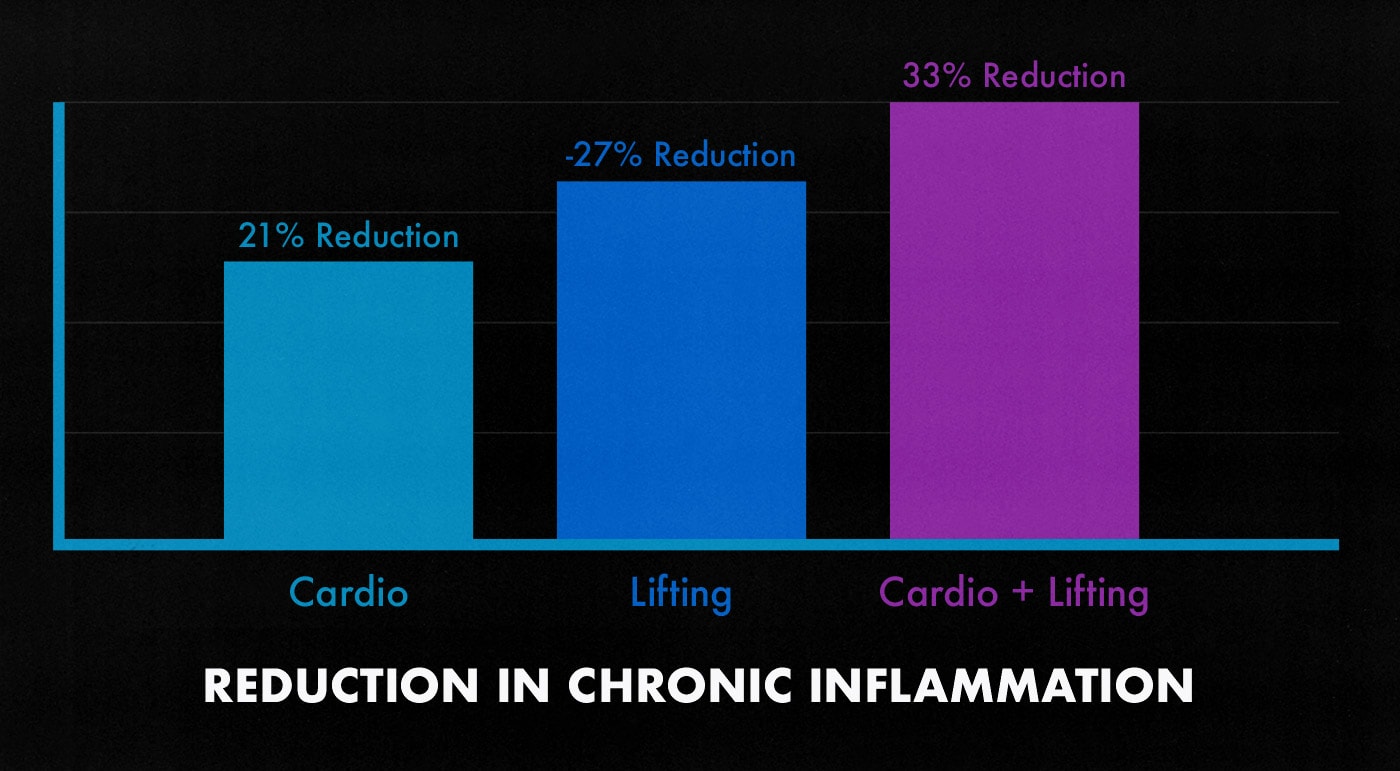
The participants were only doing about 2.5 hours of relatively easy exercise per week. Here are the details of the program:
- Cardio: 30 minutes of treadmill walking 5 days per week.
- Resistance training: 30 minutes of lifting 5 days per week
- Combined: 15 minutes on the treadmill + 15 minutes of lifting 5 days per week.
Note that the cardio group was only training at 60% of their maximum heart rate. That’s very easy cardio. You can get to that heart rate by going on a walk. I suspect that’s why the cardio workouts didn’t reduce inflammation by as much as weight training. I suspect the effect would have been stronger if the cardio was more intense, such as biking or running.
What’s cool is that our workout programs have you lifting weights for about 3 hours per week, which is more than the lifting group. If you combine that with a 20-minute walk every morning, you’ll also be doing as much cardio as the cardio group. Other research has found that a more rigorous routine reduces inflammation even more, so that should get you even more benefits than this study found (study).
Your Diet Can Reduce Inflammation
If you’re determined to reduce inflammation, you can combine your exercise routine with a healthy diet. Think of foods like fruits, vegetables, nuts, seeds, beans, lentils, whole grains, fermented dairy, olive oil, and fish, along with smaller amounts of lean meat and other forms of dairy (study, study, study).
For example, foods like beans and lentils are known to reduce inflammation (study). Oats have similar studies showing a benefit (study). Consuming fatty fish reduces markers of inflammation (study, study, study). Higher-fibre diets are also known to reduce inflammation (study). Extra-virgin olive oil performs quite well, too (study).
These anti-inflammatory effects from specific foods are small and inconsistent on their own, but when you combine them into a nutritious and balanced diet, the benefits grow much larger.
Sleep is Important, Too
The third major part of reducing inflammation is living a healthy lifestyle that allows you to recover from your daily stressors. Sleep is a crucial part of that. Ideally, you’d go to bed around the same time every night, getting at least 7 hours of good sleep. For more, we have a full article on sleep.
Conclusion
Exercise can reduce inflammation quite dramatically. Both cardio and weight training work similarly well, but doing a mix of both is even better.
You can get even greater anti-inflammatory effects from combining a good exercise routine with a nutritious diet and a healthy lifestyle.
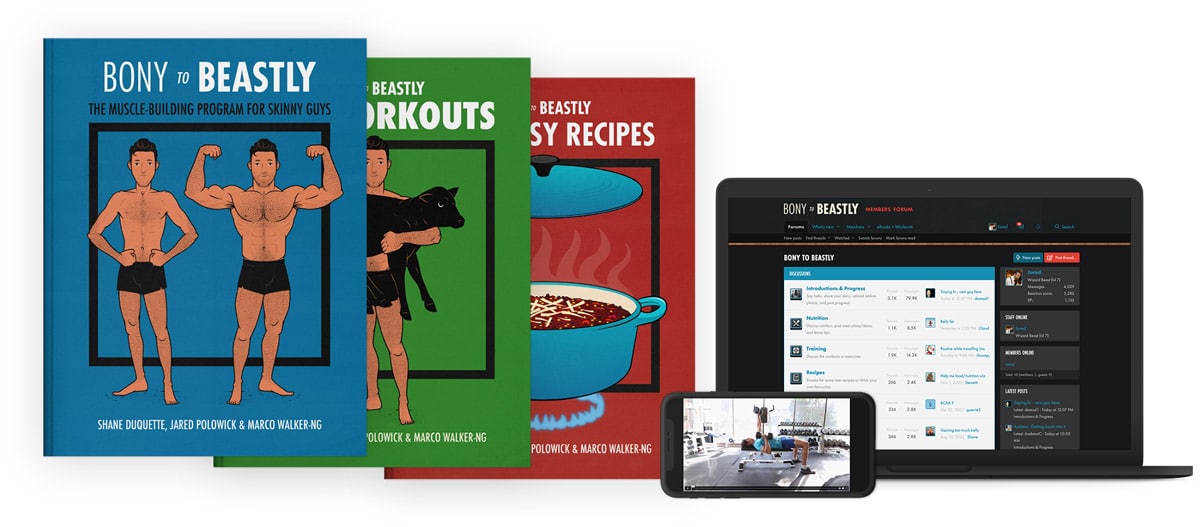
Alright, that’s it for now. If you want more muscle-building information, we have a free muscle-building newsletter. Or, if you want us to walk you through the entire process of bulking up, check out our Bony to Beastly Program or Bony to Bombshell Program. They both include a customizable workout routine, tutorial videos teaching every exercise, a full diet guide, a recipe book, and personal support from us in our online community.
We’ll help you get started, track your progress, answer all your questions, and give you feedback as you go through the program. Your results are fully guaranteed. We have an unconditional refund policy.

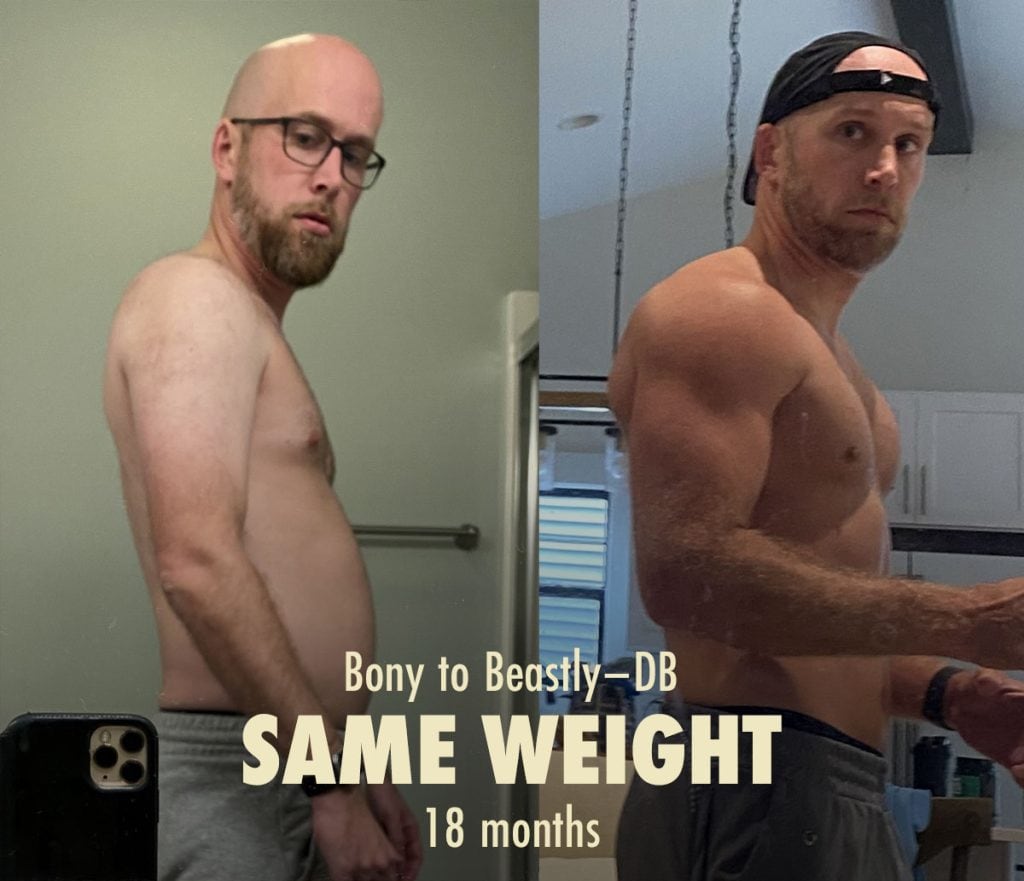


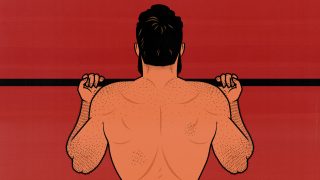

Well done. Yes, diet can reduce inflammation, and an anti-inflammatory diet can also be a good builder’s diet. Fish, turmeric, cinnamon, ginger, garlic, onion, nuts/seeds/legumes, restricting white carbs (or eliminating them entirely, which I have done for several years) are all good additions. I used to have a few middle-aged aches and pains, and a change in diet eliminated them all, including sciatic pain.
Of course, there may be instances where heavy lifting increases inflammation, particularly in those cases of overtraining (guilty!). In essence, intense exercise can trigger some inflammatory markers, but is good in the long run in terms of strengthening tendons and joints if done properly.
It also depends on the nature of the cardio as well. As an aged boxer (47), most of my cardio is on the heavy bag or the bike, combining intensity with cardio output. This is more ideal than, say, jogging… as someone who is a heavyweight (but 8.3% bf), percussive force on the knees is not the best option when you are carrying a lot of muscular bulk. Sprinting is probably better, and gives more “bang for buck” in terms of cardio and time efficiency. Flipping tires is also a good option with the secondary effect of activating a lot of muscle groups on a non-lifting day.
It also depends on how we schedule cardio in relation to lifting. I observe the minimum 6 hour window between the two to mitigate the kind of robbing of the benefits of both. There is indeed some cardio in reduced time sets as one of your good articles suggests in programming both anaerobic and aerobic activity (see: https://outlift.com/concurrent-training/) .
And then it’s all about goals, obviously. Are we cutting, bulking, recomp, or improving organ function? At present, I can say I am in a quasi-bulk/recomp phase as a mesomorph (as much as these old fashioned somatypes are kind of out of fashion scientifically). I know for myself with genetic diabetes, lipid reduction and mass bulking at the same time to create a glucose sink is essential, along with the usual strength and speed gains for the ring. And to look like a badass, which I do. 😀 And as someone who still smokes and drinks like a bad boy, I understand those habits increase inflammation, which is why the diet and exercise are the real conduits of reducing it. Stock up on omega-3s not only for inflammation, but for heart health, too. Toss away the chips, burritos, pizza, sandwiches, mashed potatoes and get jiggy with oat bran and probiotic yogurt to ensure good gut microbiome. I can safely say, anecdotally, it has been a game changer. I managed to drop 50 lbs of Covid-era weight to be 8ish% body fat with visible abs and roadmap vasculature simply by upping my activity and altering my diet. My “beetus” is now in remission, and I could kick the butt of my 20 year old self easily being the strongest I’ve ever been. No aches and pains. Inflammation gone.
I love reading these articles, by the way. Supported by legitimate articles to bypass the usual bro science, I harvest a lot of good information here. If I haven’t thanked you two already, allow me to extend my gratitude now, even though I’m just an imposter of not being ectomorphic. Solid advice always, and stuff I very much put into practice in my regimen.
Thank you, Kane!
White carbs can be quite different from one another. White sugar is not the same as flour, rice, potatoes, oats, nor cauliflower. Limiting refined sugar and refined grains could certainly help, though.
Being an aged boxer sounds awesome. Seems like you’ve got a great cardio routine. I love how boxers (and fighters in general) do types of cardio that include their upper bodies. You can get even more robust adaptations that way.
With your knees, it’s all about balancing stress, recovery, and adaptation. The percussive force of running can make your knees stronger. It can be good for the bones, tendons, and cartilage. The trick is to make sure the stress isn’t too much, and then to let yourself recover/adapt between sessions. So that might mean running slower and softer, then taking more days of rest before running again. Over time, your knees will grow stronger, and you’ll be able to handle more aggressive running sessions more often.
I think with boxing, you take a similar approach with punching, right? All that percussive force banging away at punching bags gradually makes your wrists, elbows, and bones much tougher and stronger.
The somatotypes aren’t scientifically valid, for sure. But I think they’re pretty useful in casual conversation. I don’t see any problem with a skinny guy calling himself an ectomorph, nor with you calling yourself a mesomorph. I think these are handy terms.
Congratulations on losing those 50 pounds! Getting down to 8% body fat is incredibly impressive. Nice job!
Bony to Beastly is more specifically for naturally skinny guys. This site is supposed to be for everyone. I’m glad you’re here!
First- I am by no means a medical professional, but in my humble opinion- cutting the processed the foods and especially the bread is extremely important. Dramatically decreasing sausages and others like them is important, too. Alchohol consumption and smoking should be reduced as much as possible or even better- stopped.
Physical activity, sleep and recovery at all are also important, as you write. The intermittent fasting in the 20:4 hours variant is making wonders. It also allows you to eat some junk food, without inflammation. Wim Hof’s method is also claimed to help for inflammation… and everything else, too. 🙂
Reducing the stress as much as possible is very good for managing inflammation, too. You can walk in the park or anywhere in the nature. Start meditating and practice mindfulness. Also be with positive people, which are going to charge you with positive energy.
Hey Adnan, yep! I agree. Cutting back on processed foods, smoking, and excessive drinking is great. I’m not sure about cutting back on bread in particular, especially if you’re getting a nice whole-grain bread.
Intermittent fasting isn’t bad, and it works well for some people, but I don’t think it will save you from needing to eat a good diet. Best to eat a good diet whatever your eating schedule is.
I agree about stress, and I like your methods.
I’m not sure what the Wim Hof Method is, so I won’t offer any conjecture on it.
Hey, Shane!
The problem with the bread is that it is very hard to find bread with good quality. Many brands claim that their products are great and all natural, but they don’t taste, seem and feel like that.
Wim Hof Method is about special breathing exercises- fast inhaling and exhaling for 40 reps, followed by holding your breath for as long as you can and finally you take a deep breath and hold it for a count of 15, after this you repeat that cycle for 3 more times. He also uses exposure to cold, like cold showers and walks in the cold weather, combined with the right mentality.
In fact we are all different and for everybody different things work differently. I just share my experience and my views, which might not be universal, but probably are not unique, too. 🙂
I can’t unsubscribe from new comments on your site; the link to manage subscriptions at the bottom of the emails I receive for each new comment doesn’t work.
Can you please fix the problem?
Hey Lou, I’m sorry that’s happening.
You’re getting emails whenever someone writes a comment on any blog post? How’d you sign up for that? I can probably figure out how to fix it.